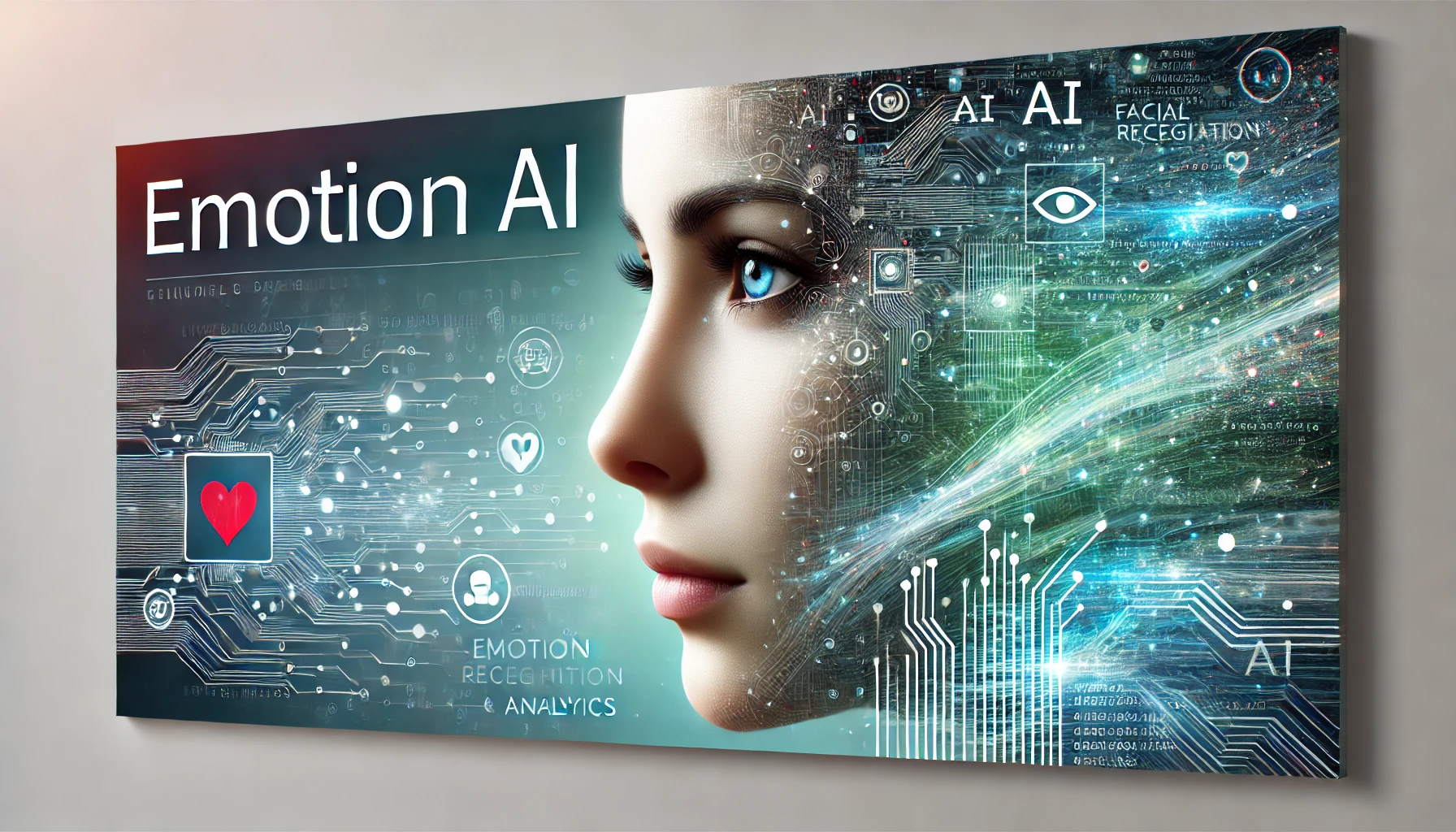Diverse Applications of Emotion AI: Healthcare, Marketing, and Automotive Innovations
Emotion AI: In today’s rapidly advancing technological landscape, artificial intelligence (AI) has transcended its traditional roles to delve into the intricate realms of human emotions. Emotion AI, a cutting-edge branch of AI, is revolutionizing the way machines interact with humans by interpreting and responding to our emotional states. This technology has far-reaching implications across various industries, from healthcare to marketing and even automotive innovations. In this blog post, we’ll explore the diverse applications of Emotion AI, focusing on how it’s transforming these key sectors.
Understanding Emotion AI and Its Applications
Emotion AI, also known as affective computing, involves the development of algorithms and systems that can recognize, interpret, and respond to human emotions. This technology uses a combination of facial recognition, voice analysis, and other biometric data to gauge emotions, providing a more intuitive and personalized interaction between humans and machines.
1. Emotion AI in Healthcare: Enhancing Patient Care
One of the most promising applications of Emotion AI is in the healthcare sector. Emotion AI in healthcare is paving the way for more empathetic and effective patient care by enabling machines to understand and respond to patients’ emotional states. For instance, AI emotional recognition can be integrated into telemedicine platforms to detect signs of anxiety or depression in patients during virtual consultations.
Benefits of Emotion AI in Healthcare:
- Improved Mental Health Support: By utilizing AI-based emotion detection, healthcare providers can monitor patients for signs of emotional distress, allowing for timely interventions.
- Personalized Treatment Plans: Emotion AI can help tailor treatment plans based on a patient’s emotional responses, leading to better outcomes.
- Enhanced Patient-Doctor Communication: Emotion AI can bridge the gap in remote healthcare by analyzing patient emotions and helping doctors adjust their communication strategies accordingly.
A prime example of this technology in action is Affectiva’s Emotion AI, which is being used to monitor and improve patient experiences in healthcare settings. By recognizing emotional cues, healthcare providers can offer more compassionate and effective care, ultimately leading to improved patient satisfaction and outcomes.
2. Emotion AI for Marketing: Crafting Personalized Customer Experiences
In the realm of marketing, understanding consumer emotions is key to creating impactful campaigns. Emotion AI for marketing enables brands to tap into the emotional responses of their audience, allowing for highly personalized and engaging marketing strategies.
How Emotion AI is Transforming Marketing:
- Real-Time Emotion Analysis: AI emotional recognition tools can analyze customer reactions to advertisements in real time, providing valuable insights into what resonates with the audience.
- Tailored Marketing Campaigns: By leveraging emotion detection AI, marketers can create campaigns that evoke specific emotions, leading to higher engagement and conversion rates.
- Enhanced Customer Experience: Emotion AI allows for the creation of personalized experiences that cater to the emotional needs of customers, fostering brand loyalty and satisfaction.
Affectiva, a leader in the field of Emotion AI, has been instrumental in helping Fortune 500 companies refine their marketing strategies by analyzing customer emotions during ad campaigns. This technology enables marketers to craft messages that not only reach but resonate with their target audience on an emotional level, leading to more successful marketing outcomes.
3. Emotion AI in Automotive: Driving Safety and Comfort
The automotive industry is another sector where Emotion AI is making significant strides. Emotion AI in automotive applications focuses on enhancing driver safety and comfort by monitoring and responding to the emotional states of both drivers and passengers.
Key Applications of Emotion AI in Automotive:
- Driver Monitoring Systems: Emotion AI can be integrated into vehicles to monitor drivers’ emotional states, such as stress or fatigue, and provide real-time alerts or adjustments to improve safety.
- Passenger Comfort: By analyzing passengers’ emotions, vehicles equipped with AI-based emotion detection can adjust the environment, such as lighting or temperature, to enhance comfort.
- Advanced Safety Features: Emotion AI can detect potentially dangerous situations, such as road rage or distractions, and take preventive actions to avoid accidents.
For example, companies like Cogito are developing AI-driven systems that monitor driver emotions to reduce the risk of accidents. These systems can detect signs of stress or drowsiness and automatically adjust the vehicle’s settings or alert the driver to take a break, thereby enhancing overall road safety.
The Technology Behind Emotion AI
Emotion AI is powered by advanced technologies such as machine learning, natural language processing (NLP), and computer vision. These technologies work together to analyze a wide range of emotional cues, from facial expressions to voice tones, enabling machines to interpret and respond to human emotions accurately.
4. AI Emotional Recognition: Decoding Human Emotions
At the core of Emotion AI is AI emotional recognition, which involves the use of algorithms to detect and interpret human emotions. This technology relies heavily on computer vision and NLP to analyze facial expressions, voice intonations, and even text to determine the emotional state of an individual.
How AI Emotional Recognition Works:
- Facial Emotion Recognition AI: This technology uses computer vision to analyze facial expressions and detect emotions such as happiness, sadness, anger, and surprise.
- Voice Emotion Recognition: By analyzing voice modulations, AI can detect emotions such as stress, anxiety, or excitement.
- Text-Based Emotion Detection: NLP algorithms analyze written text to identify emotions conveyed through words, enabling machines to understand the sentiment behind user-generated content.
Emotion detection AI has found applications in various fields, from customer service to mental health monitoring, where understanding emotions is crucial for effective communication and intervention.
5. Affective Computing AI: The Future of Human-Machine Interaction
Affective computing AI, a subset of Emotion AI, focuses on the development of systems that can recognize, interpret, and simulate human emotions. This technology is essential for creating more natural and intuitive interactions between humans and machines.
Applications of Affective Computing AI:
- Human-Computer Interaction: Affective computing enables machines to respond to users’ emotional states, making interactions more personalized and engaging.
- Mental Health Applications: By monitoring emotional cues, affective computing AI can assist in diagnosing and treating mental health conditions.
- Customer Service: AI emotion analytics tools can help customer service agents understand and respond to customers’ emotions, improving the overall service experience.
The potential of affective computing AI extends far beyond current applications, with ongoing research exploring new ways to integrate emotional intelligence into machines.
Challenges and Ethical Considerations in Emotion AI
While Emotion AI holds immense potential, it also raises several ethical concerns, particularly regarding privacy and the potential for misuse. As Emotion AI systems become more sophisticated, it’s essential to address these challenges to ensure that the technology is used responsibly and ethically.
6. AI-Based Emotion Detection: Balancing Innovation with Ethics
AI-based emotion detection involves collecting and analyzing vast amounts of personal data, which raises concerns about privacy and consent. It’s crucial for developers and users of Emotion AI to implement robust data protection measures and ensure that the technology is used transparently and ethically.
Key Ethical Considerations:
- Data Privacy: Ensuring that emotional data is collected, stored, and used in compliance with data protection regulations.
- Bias and Fairness: Addressing potential biases in Emotion AI algorithms to ensure that the technology does not disproportionately affect certain groups.
- Transparency: Providing users with clear information about how their emotional data is being used and obtaining informed consent.
Organizations developing Emotion AI technologies must prioritize ethical considerations to maintain public trust and ensure the technology’s long-term success.
The Future of Emotion AI
The future of Emotion AI is promising, with ongoing advancements poised to further integrate emotional intelligence into various aspects of our lives. As AI continues to evolve, we can expect Emotion AI to play an increasingly important role in areas such as education, entertainment, and even social interactions.
7. AI Emotion Analytics: Shaping the Future of Emotional Intelligence
AI emotion analytics is set to revolutionize how we understand and interact with emotions in the digital age. By providing deeper insights into human emotions, this technology will enable more personalized and effective interactions across various platforms.
Future Trends in Emotion AI:
- Integration with Virtual Reality (VR): Emotion AI could enhance VR experiences by adjusting the environment based on users’ emotional responses.
- Expansion into New Industries: Beyond healthcare, marketing, and automotive, Emotion AI could find applications in education, entertainment, and social media.
- Increased Personalization: As Emotion AI becomes more advanced, we can expect more personalized interactions with technology, tailored to our emotional states.
The continued development of AI emotion analytics will undoubtedly shape the future of emotional intelligence, offering new possibilities for human-machine interactions.
The Impact of Emotion AI Across Industries
Emotion AI is transforming the way we interact with technology, offering unprecedented opportunities for personalization and empathy in various industries. From enhancing patient care in healthcare to creating emotionally resonant marketing campaigns and improving driver safety, the applications of Emotion AI are vast and varied.
As we look to the future, it’s clear that Emotion AI will continue to play a significant role in shaping the next generation of human-machine interactions. By understanding and leveraging the power of AI emotional recognition, affective computing AI, and AI emotion analytics, we can unlock new levels of innovation and impact across multiple sectors.
For more insights on the future of AI and its applications, visit Regent Studies. Additionally, you can learn more about the ethical considerations and latest advancements in Emotion AI by exploring this MIT Sloan article on Emotion AI.
By staying informed and embracing the potential of Emotion AI, we can ensure that this powerful technology is used to create a more empathetic and connected world.




